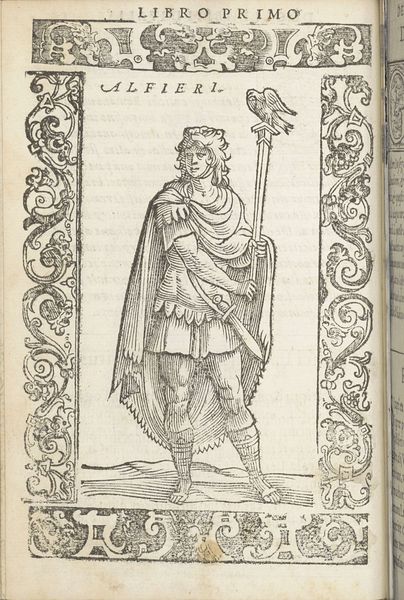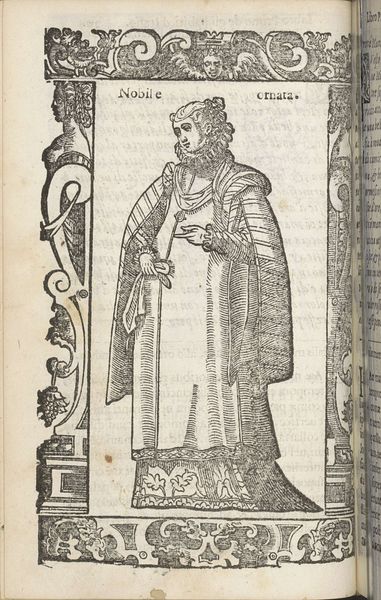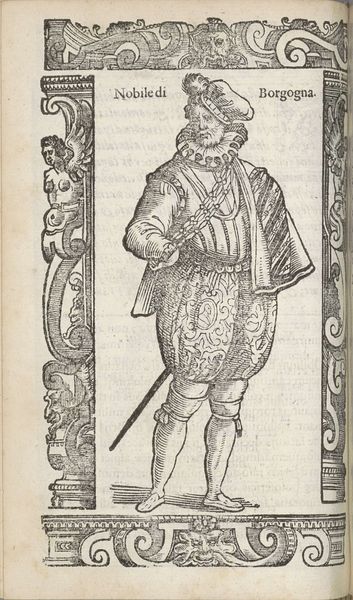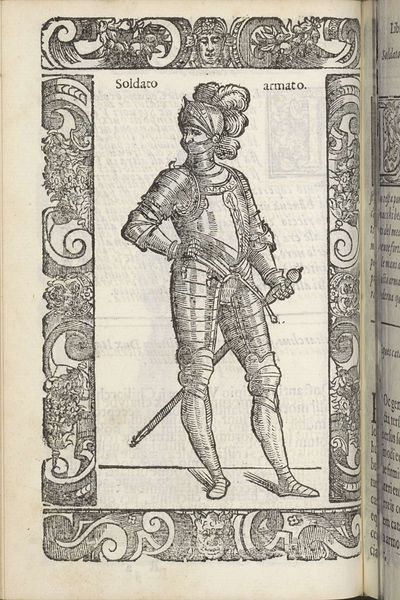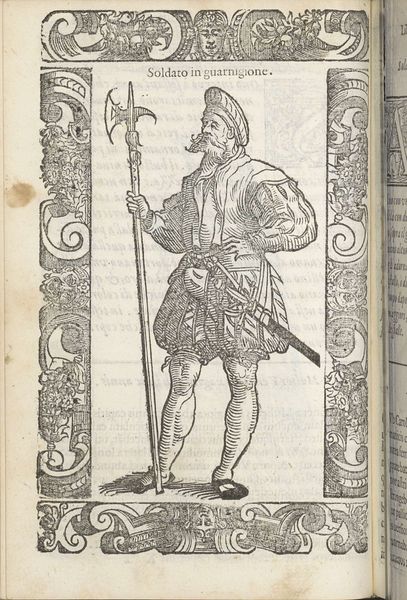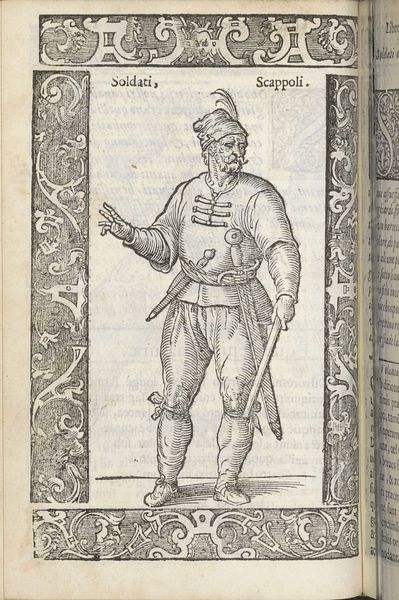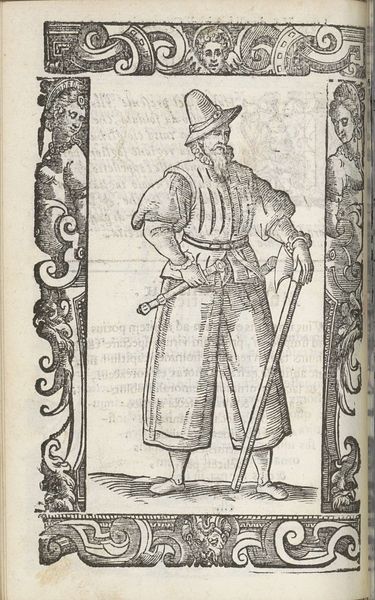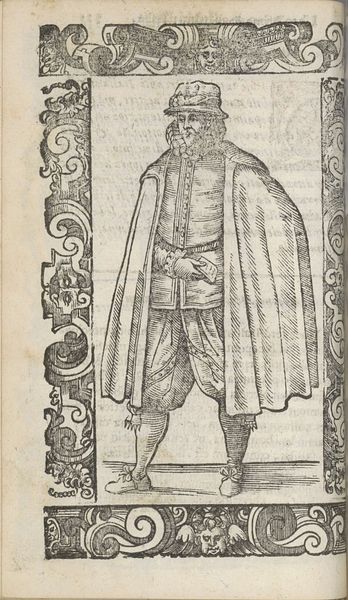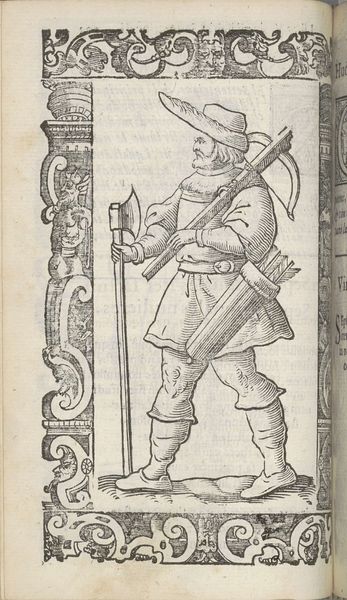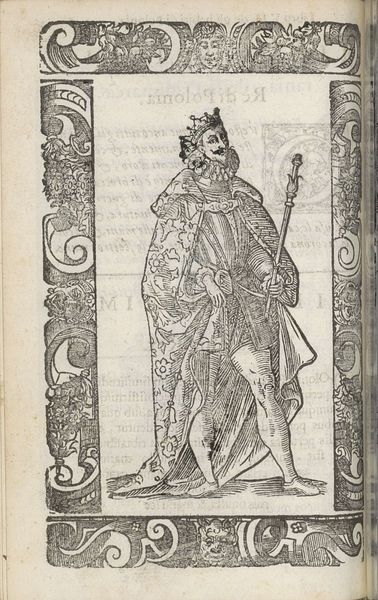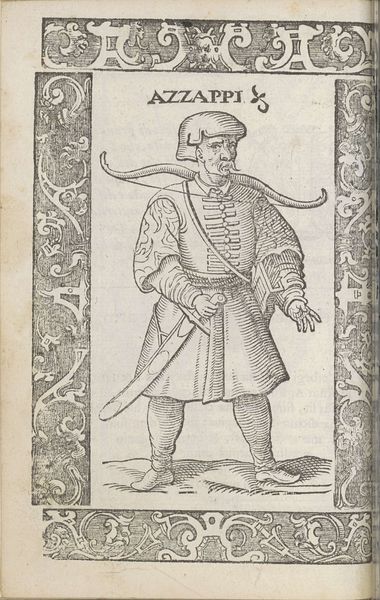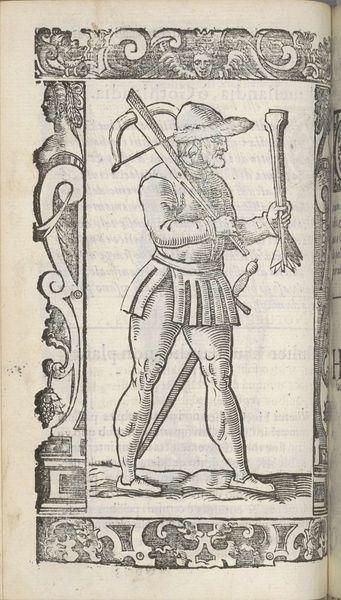
drawing, print, engraving
#
portrait
#
drawing
#
medieval
# print
#
figuration
#
line
#
engraving
Dimensions: height 167 mm, width 125 mm
Copyright: Rijks Museum: Open Domain
Curator: This print from 1598 by Christoph Krieger is titled "Huomo d’arme," and it immediately strikes me with its precision. Editor: It does possess a certain severity, a stark and rather confrontational presence enhanced by the heavy outlines, I think. There’s something very direct about it. Curator: Well, think about the context. Engravings like these weren't just art, they were a form of mass communication. How accessible would you say metal and engraving production processes were at this moment in time, the late 16th century? Editor: Limited certainly. But consider who would commission such a work: likely someone involved with military matters or perhaps a printmaker serving a noble court interested in projecting power through visual representation. Curator: Precisely. Notice the details in the armor – each plate carefully rendered. These kinds of printed images circulated across Europe as a medium through which technology and craftsmanship of this nature were recorded and transmitted. There is so much visual information about its specific composition. Editor: I am struck too by the elaborate decorative border of classical busts and stylized flora that frame the armored figure. It really elevates him doesn't it, beyond a simple illustration of weaponry, and places the work, and the ‘Huomo d’arme,’ squarely within the prevailing artistic conventions of the era? Curator: It is an intriguing dialogue between function and decoration, wouldn’t you say? Look at the textures, especially how the cross-hatching defines form and suggests depth in the metal surfaces, almost imitating their original crafting. This points to the significant skills of the engraver and how these skills influenced printmaking throughout this historical period. Editor: The distribution of such imagery really underpinned notions of social hierarchy and military might. These early prints are often found bound into books or displayed in elite households as markers of taste and status, offering insights into how art functioned within its socio-political milieu. Curator: Reflecting on this detailed print, I am especially intrigued by the artist’s intimate knowledge of materials involved in producing and representing it, both ink and armor, Editor: And for me, it’s always fascinating to consider how art of this era really helped to solidify social positions and propagate historical narratives which continues to be crucial as a concept to examine.
Comments
No comments
Be the first to comment and join the conversation on the ultimate creative platform.

